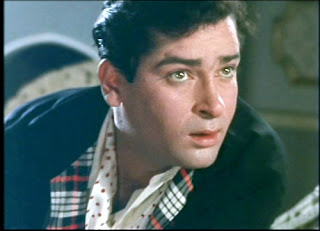One Song at a time: 47. Jummandi Naadham

There were two ways to get to my school, St.Mary's, from Secunderabad Railway Station. One was the straightforward way crossing SPG school, taking right at Manohar theatre, crossing St.Francis School and taking left to reach my school. The other was a short cut. Who in his youth can resist a short cut? This was through a very very narrow lane behind SPG school, in the Regimental Bazar area. The lane had enough width for a couple of scooters to pass each other, or maybe not. The house on both sides had the traditional raised platform and very low roofs. The door size was such that any adult, whatever his height, had to enter respectfully. The houses were a two room affair and each house was joined to its neighbors at the hip. There was no gap between the house and after around 15 to 20 houses, the perpendicular road would provide the break, after which the house again stretched holding each other. There was no space for a compound wall and if an house did not have the platform ou...




